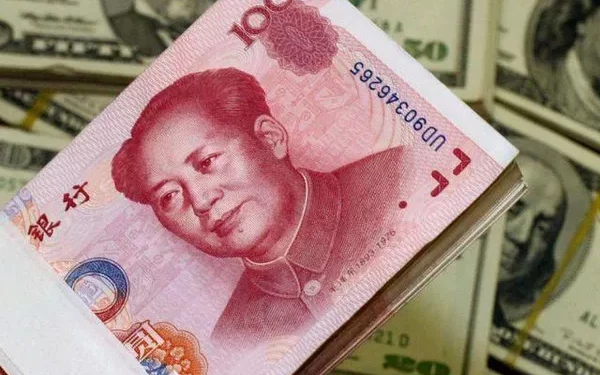The foreign exchange market, often referred to as Forex or FX, is one of the largest financial markets in the world. It involves the trading of currencies from different countries, with trillions of dollars exchanged daily. Understanding currency conversion rates is essential for anyone involved in international trade, travel, or investment. In this article, we will explore the conversion of 75 Chinese yuan (CNY) to US dollars (USD), the factors influencing this rate, and the broader context of currency exchange.
Currency Conversion Basics
Currency conversion is the process of exchanging one currency for another. The exchange rate determines how much of one currency you can get in return for another. In our case, we want to know how many US dollars we can get for 75 Chinese yuan.
Current Exchange Rate
To find out how much 75 yuan is in USD, we first need to know the current exchange rate between the Chinese yuan and the US dollar. Exchange rates fluctuate constantly due to market dynamics. They can change several times within a single day based on economic indicators, political events, and market sentiment.
As of the latest data, the exchange rate is approximately:
1 CNY = 0.14 USD.
Using this rate, we can convert 75 CNY to USD.
Conversion Calculation
To calculate the conversion, we multiply the amount in yuan by the exchange rate:
75 CNY×0.14 USD/CNY=10.5 USD
Thus, 75 yuan is approximately 10.5 US dollars at this exchange rate.
Understanding Exchange Rates
The exchange rate is the price of one currency in terms of another. It can be expressed in two ways:
Direct Quote: The amount of domestic currency needed to buy one unit of foreign currency.
Indirect Quote: The amount of foreign currency needed to buy one unit of domestic currency.
In our case, the USD is the domestic currency when viewed from the perspective of the United States, while the CNY is the foreign currency.
See Also: Current RMB Exchange Rate: How Much is 9 Yuan to Naira?
Factors Affecting Exchange Rates
Several factors influence exchange rates, including:
Interest Rates: Central banks set interest rates that affect currency value. Higher interest rates offer lenders a higher return relative to other countries. This can attract foreign capital, leading to a stronger currency.
Inflation: A country with a low inflation rate relative to other countries will see an appreciation in the value of its currency. Low inflation indicates a stable economy.
Political Stability: Countries with stable governments and economies attract more foreign investment. This demand for the country’s currency can lead to an increase in its value.
Economic Indicators: Reports such as GDP growth, unemployment rates, and manufacturing output can influence perceptions of a country’s economic health, affecting its currency value.
Speculation: Traders in the Forex market may speculate on currency movements based on news, reports, and trends. This speculation can cause fluctuations in the exchange rate.
Historical Context
Understanding the historical context of the yuan to dollar exchange rate can provide insight into current trends. The yuan has undergone significant changes over the past few decades.
2005 Reforms: In 2005, China moved from a fixed exchange rate regime to a more flexible system. This allowed the yuan to appreciate gradually against the dollar.
2010-2014: During this period, the yuan continued to strengthen, largely due to China’s economic growth. By 2014, the yuan was around 6.1 to 6.2 per dollar.
2015 Devaluation: In August 2015, the People’s Bank of China (PBOC) announced a surprise devaluation of the yuan, leading to increased volatility. This was intended to support exports and address economic slowdowns.
Post-2015: Since the devaluation, the yuan has fluctuated due to trade tensions and changes in US monetary policy.
Current Market Trends
As of now, the yuan remains under pressure due to various factors. These include:
Trade Tensions: Ongoing trade disputes between the US and China can influence the yuan’s value. Tariffs and trade barriers can weaken the currency.
Monetary Policy: The PBOC’s policies, including interest rate changes and liquidity measures, play a crucial role in determining the yuan’s strength.
Global Economic Conditions: The overall health of the global economy can affect the yuan. In times of uncertainty, investors often flock to safer currencies like the US dollar.
Capital Flows: The movement of capital in and out of China can impact the yuan’s value. Increased foreign investment can strengthen the currency, while capital flight can weaken it.
Using the Exchange Rate
Knowing how much 75 yuan is in USD can be beneficial for various reasons:
Travel: If you are traveling to the US, understanding currency conversion rates helps you budget and manage your expenses.
Investment: Investors looking to buy Chinese assets need to convert their dollars to yuan. Understanding exchange rates can help them make informed decisions.
International Trade: Businesses engaged in international trade need to be aware of currency fluctuations to manage their profits and losses effectively.
Remittances: If you are sending money to China or receiving money from there, knowing the exchange rate can help you determine how much you will actually receive.
Conclusion
In summary, the current exchange rate for 75 Chinese yuan is approximately 10.5 US dollars. This conversion rate is influenced by a variety of factors, including interest rates, inflation, political stability, and market speculation. Understanding these dynamics is crucial for anyone involved in foreign exchange, whether for personal, business, or investment purposes.
The foreign exchange market is complex and ever-changing. Keeping up with trends and developments is essential for effective currency management. As we move forward, the relationship between the yuan and the dollar will continue to evolve, influenced by global economic conditions and policy decisions. Understanding these factors will help individuals and businesses navigate the complexities of currency exchange successfully.
Related Topics:




























